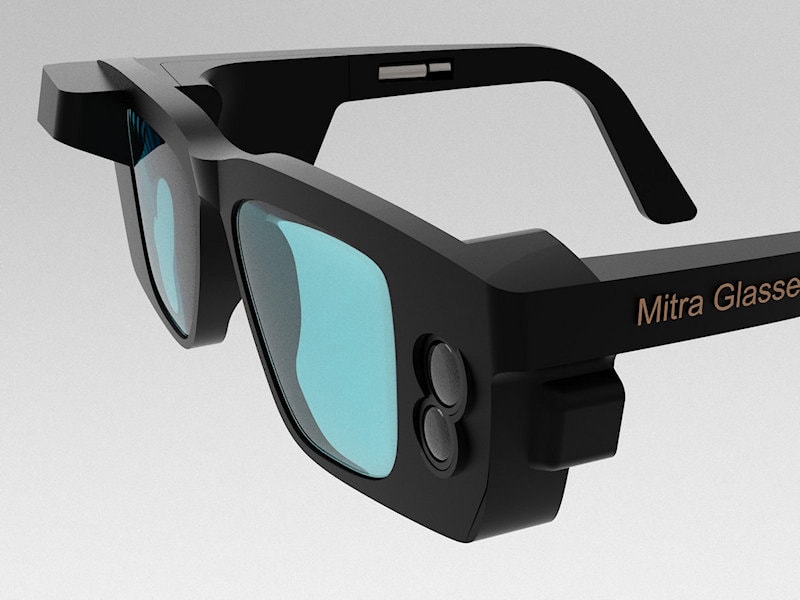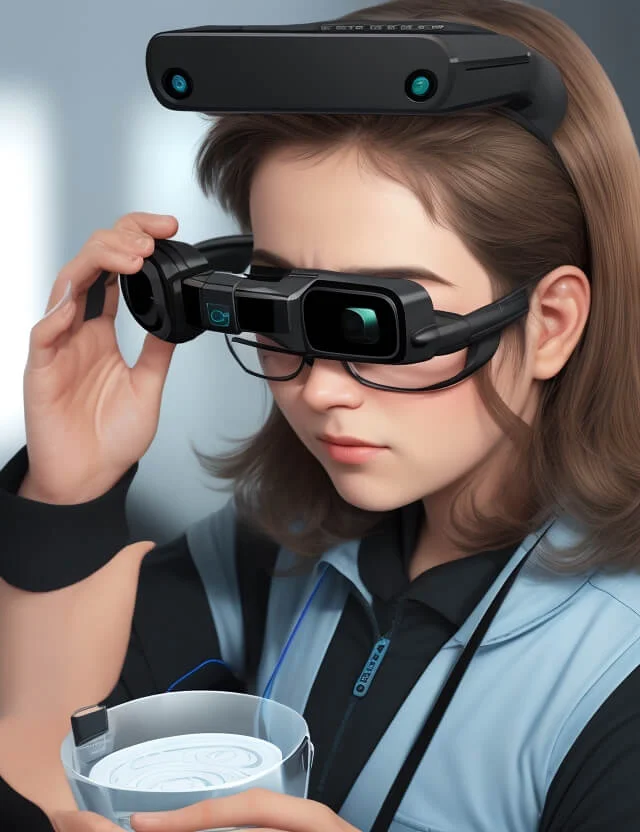Discover Advanced Assistive Tools for Individuals With Aesthetic Impairments
The landscape of assistive technology for individuals with aesthetic problems is developing quickly, offering an array of innovative tools that improve freedom and engagement. From smart glasses that perfectly combine visual input with auditory guidance to advanced navigating applications that redefine spatial recognition, these tools are reshaping opportunities.
Smart Glasses Innovations
Smart glasses stand for a substantial development in assistive technology for people with visual disabilities. Geared up with sensing units and electronic cameras, clever glasses can catch real-time aesthetic info, which is after that processed and conveyed to the customer with sound responses or haptic sensations.
In addition, innovations in man-made intelligence have better boosted the capacities of smart glasses. Device learning algorithms can recognize faces, checked out message, and recognize objects, making them vital devices for everyday tasks. Customers can receive acoustic hints that provide context concerning their setting, cultivating freedom and self-confidence.
Furthermore, the ergonomic layout and lightweight nature of lots of smart glasses make them suitable for long term use, ensuring comfort while enhancing functionality. As these devices continue to develop, they hold the possible to change the method individuals with aesthetic problems experience their day-to-day lives, bridging the gap in between access and modern technology. The recurring r & d in this area assurance to broaden the possibilities for clever glasses, making them an essential component of contemporary assistive devices.
Navigating Apps and Tools
Numerous navigation apps and devices have arised as vital resources for people with aesthetic problems, significantly improving their capacity to pass through strange atmospheres. These innovations take advantage of GPS performance, audio hints, and real-time information to give individuals with precise navigating support.
One famous example is the Aira app, which attaches customers to experienced representatives who can give aesthetic descriptions of environments and navigating advice via a real-time video feed. This solution enhances the individual's spatial understanding and self-confidence while navigating. An additional noteworthy device is Seeing Eye GPS, which offers voice-guided navigating and sights, allowing individuals to accessibility essential details concerning their environments.

As modern technology continues to advancement, the growth of much more innovative navigation tools promises to more encourage individuals with visual disabilities, assisting in smooth flexibility and assimilation right into diverse atmospheres. Such developments are critical in promoting a much more inclusive culture.
Braille Modern Technology Advancements
In the last few years, innovations in Braille innovation have actually dramatically transformed how individuals with visual disabilities access details and involve with the world around them. The development of mobile Braille display screens has actually revolutionized reading by enabling individuals to attach wirelessly to tablet computers, computers, and smart devices. These devices convert text right into Braille in real-time, allowing smooth communication with electronic web content.
Moreover, ingenious Braille printers have actually arised, enhancing the manufacturing of responsive materials. Modern embossers are quicker and eye stigma much more effective, permitting the quick development of Braille papers and academic materials. This performance decreases the moment and expense connected with generating Braille resources, making them a lot more available to institutions and organizations.
In addition, read the article the assimilation of Braille with other innovations, such as fabricated knowledge and artificial intelligence, has opened new methods for individualized learning experiences. Voice recognition and synthesis innovations can complement Braille, providing an inclusive strategy to info dissemination.
As the need for inclusive education and learning and office atmospheres expands, these technical innovations play an important role in encouraging people with visual problems, ensuring they have equal access to information and chances in different aspects of life.
Wearable Tools for Independence
An expanding array of wearable gadgets is improving self-reliance for individuals with visual impairments, providing ingenious options that improve navigating and daily living. Braille displays and notetakers. These gadgets utilize innovative modern technologies to provide real-time responses and support, promoting autonomy in different settings

Wearable innovation additionally consists of smartwatches that can be set with ease of access functions, enabling users to obtain notices, track their locations, or even require assistance with the touch of a switch. Some devices incorporate fabricated intelligence to evaluate the setting, offering sound descriptions of close-by things or individuals.
Voice-Activated Assistive Solutions
Leveraging voice-activated assistive services has actually transformed the landscape of assistance for people with aesthetic disabilities, offering hands-free our website interaction and access to a range of tasks. These technologies utilize all-natural language handling and fabricated intelligence to enable individuals to do daily activities via easy voice commands.

Moreover, recent advancements in voice acknowledgment precision have actually boosted the user experience considerably, fitting diverse accents and speech patterns. This inclusivity ensures that more people can profit from these innovations, fostering a better sense of autonomy.
Final Thought
Finally, the advancement of innovative assistive tools dramatically improves the self-reliance and lifestyle for people with visual disabilities. Advancements such as wise glasses, navigation applications, Braille modern technology, wearable devices, and voice-activated solutions jointly foster an even more inclusive setting. These innovations equip individuals to navigate their surroundings with self-confidence and engage more fully with the world, ultimately promoting greater availability and equivalent possibilities for people facing visual difficulties.
The landscape of assistive modern technology for individuals with aesthetic problems is advancing swiftly, providing a range of cutting-edge devices that enhance autonomy and engagement.Smart glasses stand for a considerable development in assistive modern technology for people with aesthetic problems. As these gadgets continue to develop, they hold the prospective to revolutionize the means individuals with visual problems experience their daily lives, bridging the gap between ease of access and innovation.In recent years, innovations in Braille innovation have considerably changed exactly how individuals with aesthetic problems access info and engage with the world around them. These innovations equip users to browse their surroundings with self-confidence and engage more fully with the globe, ultimately promoting greater accessibility and equivalent chances for individuals encountering aesthetic difficulties.